Disclosure: This article contains affiliate links. We may earn a commission from purchases at no extra cost to you, which helps our travel content.
When I tell people I spent a month working remotely from Palikir, Micronesia, their first question is inevitably: 'Where exactly is that?' Their second: 'Can you even get Wi-Fi there?' As someone who's built a career advocating for underrepresented voices, I've found that the most overlooked destinations often offer the richest experiences. Nestled in the western Pacific Ocean, Palikir—the capital of the Federated States of Micronesia—represents one of the last frontiers for digital nomads. While it lacks the Instagram fame of Bali or the digital infrastructure of Lisbon, what Palikir offers is something increasingly rare: an authentic immersion into a culture largely untouched by mass tourism, combined with the growing capability to stay connected to your professional life. This guide draws from my month-long experience transforming this Pacific capital into my remote office, navigating its unique challenges, and discovering how working from one of the world's least-visited capitals can profoundly transform your perspective on work-life balance.
Connectivity Reality Check: Internet in Palikir
Let me be transparent upfront: working remotely from Palikir requires patience, preparation, and flexibility. Unlike established digital nomad hubs, Micronesia's infrastructure is still developing—something I quickly appreciated given my work researching smart-city initiatives in more connected regions.
Palikir offers basic internet connectivity, primarily through FSM Telecommunications Corporation (FSMTC). During my stay, I experienced download speeds averaging 2-5 Mbps—sufficient for email and basic tasks but challenging for video calls or large file transfers. This isn't Fiber optic territory, but it's workable with the right expectations and tools.
My saving grace was bringing a reliable portable hotspot with a global data plan. This provided essential backup during the frequent afternoon power fluctuations that affected local connections. While expensive, having this redundancy meant I could maintain communication with clients regardless of local conditions.
The most reliable connection I found was at the Mangrove Bay Hotel's business center, where they've invested in satellite internet that provides more stable connectivity than elsewhere in the city. For $15 daily, non-guests can purchase access—steep by local standards but reasonable when your livelihood depends on staying connected.
Perhaps most surprising was discovering small pockets of connectivity in unexpected places. The College of Micronesia-FSM campus offers decent Wi-Fi in their library, and several government buildings have guest networks that perform admirably during non-peak hours. The key is mapping these locations during your first days and creating a rotation of workspaces.

💡 Pro Tips
- Purchase an FSMTC SIM card immediately upon arrival for backup data
- Download essential work files before arriving in Micronesia
- Schedule important video calls during early morning hours (6-9am) when networks are less congested
Finding Your Productive Space: Workspaces in Palikir
Unlike established digital nomad destinations, Palikir won't greet you with trendy co-working spaces or café chains advertising free Wi-Fi. This initially challenged me as someone who thrives on structured work environments, but it ultimately led to discovering more authentic and interesting productivity spaces.
My primary workspace became the outdoor terrace at Village Hotel, where the management generously allowed extended working sessions with the purchase of their fresh fruit smoothies (the papaya-coconut blend became my daily ritual). The combination of gentle trade winds, partial shade from breadfruit trees, and the distant sound of community life created an unexpectedly conducive environment for focused work.
For more formal needs, the Pohnpei Public Library offers air-conditioned space with basic tables and chairs. While their internet connection is modest, the quiet atmosphere makes it ideal for writing or detailed work requiring concentration. I found myself spending afternoons there drafting legal briefs, appreciating the contrast between my public defender work in Philadelphia and this tranquil Pacific setting.
Perhaps my most productive discovery was arranging a temporary desk share at the Micronesia Conservation Trust office. As an organization hosting occasional international researchers, they understood remote work needs and offered weekly desk rentals ($75/week) with access to their relatively stable internet connection. This arrangement provided not just a workspace but valuable connections with local environmental professionals.
My essential companion throughout was my portable laptop stand which transformed any surface into an ergonomic workspace. Combined with a travel keyboard and mouse, this setup prevented the neck strain that would otherwise result from impromptu workspaces.
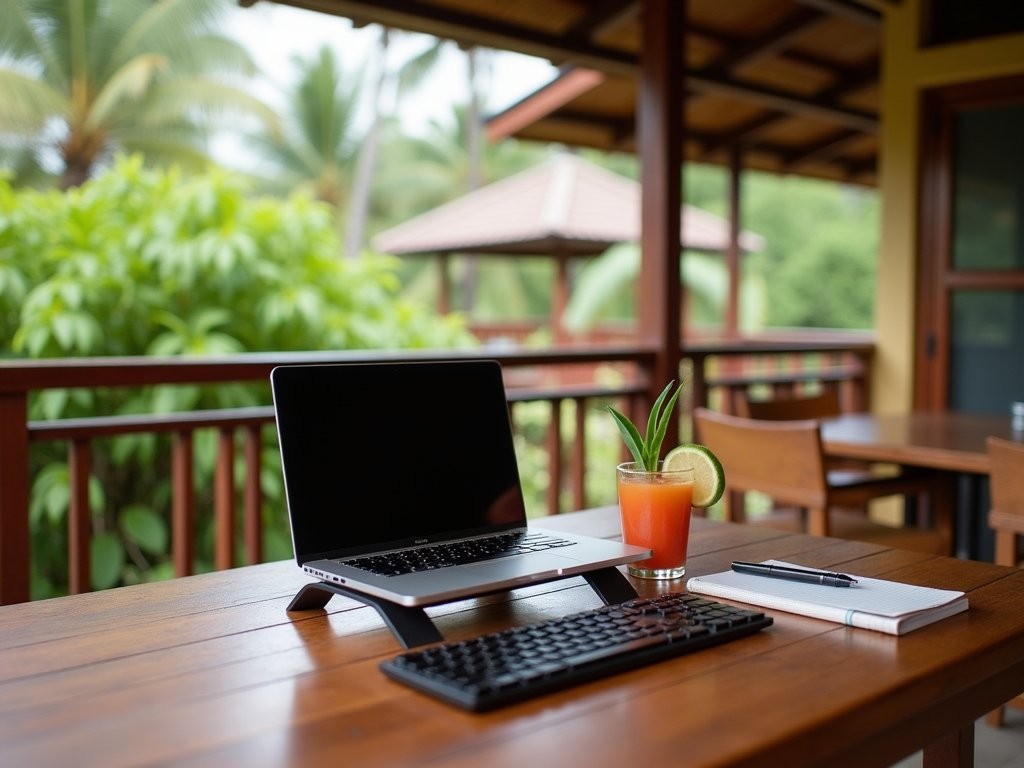
💡 Pro Tips
- Contact local NGOs before arrival about potential desk-sharing arrangements
- Invest in a quality pair of noise-cancelling headphones for impromptu workspaces
- The Australian Embassy compound occasionally allows visitors to use their reliable internet in the public waiting area
Cultural Immersion While Maintaining Productivity
The most rewarding aspect of working from Palikir was the opportunity to immerse in Micronesian culture while maintaining professional responsibilities—a balance rarely achieved in quick tourist visits.
My background researching public murals as historical records drew me to the government buildings in Palikir center, where contemporary Micronesian artists have created stunning murals depicting the nation's journey from colonization to independence. These became regular stops during my midday breaks, each viewing revealing new details and perspectives. The National Archives staff, noting my repeated visits, eventually invited me to view their collection of historical photographs documenting the same events portrayed in the murals—an impromptu masterclass in Micronesian history.
I structured my workweek to accommodate local rhythms, adopting what I call a 'split shift' approach: working early mornings (5-11am) when connectivity was most reliable, taking extended midday breaks for cultural activities or meetings with locals, then returning to lighter work in the evenings. This schedule allowed me to participate in community events like traditional navigation demonstrations at the College of Micronesia and weekly market days where I sourced incredible fresh produce.
Language exchange became another productive cultural bridge. I arranged to meet with a local teacher three evenings weekly, trading English conversation practice for basic Pohnpeian language lessons. These sessions not only enriched my experience but provided valuable insights for my work documenting indigenous language preservation efforts.
To capture these experiences, I relied on my waterproof camera which proved invaluable during sudden tropical downpours and coastal explorations. The ability to photograph underwater scenes while snorkeling on lunch breaks added another dimension to documenting this unique work experience.
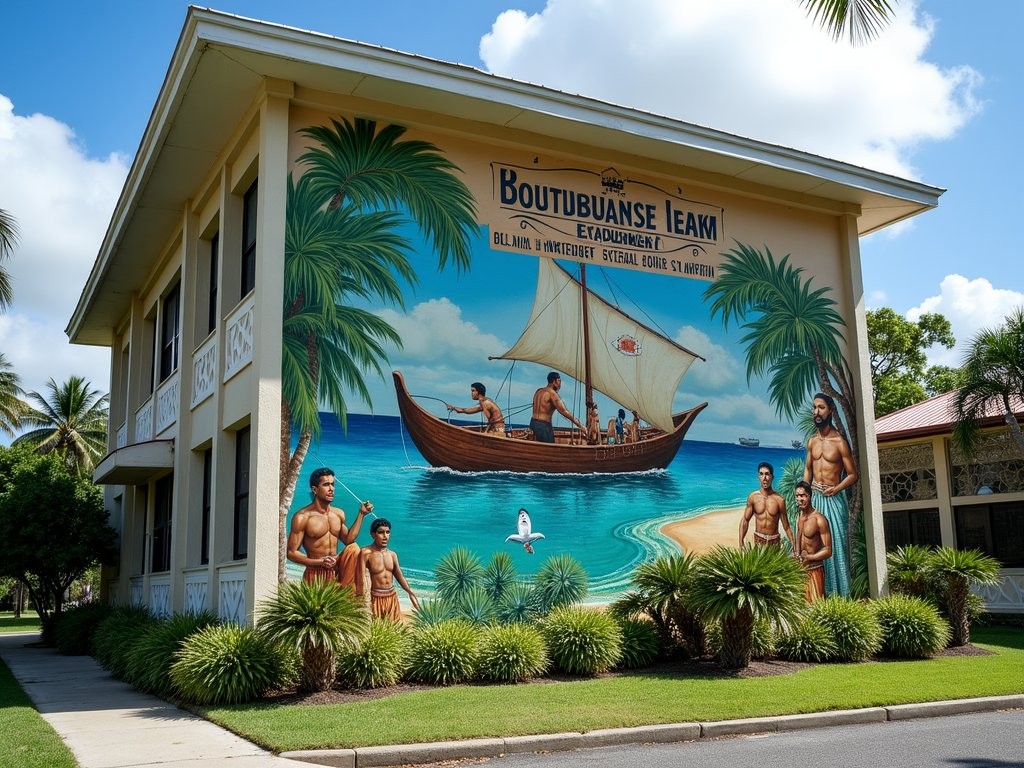
💡 Pro Tips
- Respect the Sunday quiet observed throughout Micronesia by planning a non-work day
- Learn basic greetings in Pohnpeian to build goodwill with local contacts
- Visit the Pohnpei State Government offices to view their exceptional mural collection during your lunch break
Navigating Visa Requirements and Accommodation
Working remotely from Palikir requires navigating specific visa considerations that differ from typical tourist destinations. The Federated States of Micronesia offers U.S. citizens a 30-day visa-free entry (extendable to 90 days), making it relatively accessible for American remote workers. As an attorney, I'm particularly attentive to immigration requirements, and I found FSM's policies straightforward but strictly enforced.
For stays beyond 30 days, you'll need to visit the Division of Immigration in downtown Palikir with your passport, return ticket proof, and a letter explaining your purpose (I was transparent about working remotely while experiencing the culture). The extension process took approximately three days and cost $50—remarkably efficient compared to many countries.
Accommodation in Palikir presents limited but adequate options. I initially booked two weeks at the South Park Hotel ($85/night), which offers reliable generators during power outages—a crucial consideration for remote workers. After establishing connections, I transitioned to a monthly rental arranged through the Pohnpei Tourism Office: a basic but comfortable one-bedroom apartment with a kitchenette for $850/month, significantly reducing my expenses.
The apartment's modest furnishings were supplemented by my packable camping pillow which ensured comfortable sleep despite the firm local bedding preferences. This small comfort made a significant difference during my extended stay.
Water and power interruptions are common throughout Palikir. Most accommodations provide backup systems, but I recommend confirming these details before booking. My apartment included a water catchment system and shared generator access, though I quickly adapted to the local practice of evening bucket showers during water restrictions—a humbling reminder of resource conservation needs in island nations.

💡 Pro Tips
- Request accommodation with backup power generators for work continuity during outages
- Bring a power bank that can charge your laptop, not just your phone
- Register with the U.S. Embassy in Kolonia upon arrival for safety updates and networking opportunities
Building a Sustainable Digital Nomad Practice in Micronesia
Working remotely from Palikir isn't just about maintaining your existing professional life—it's an opportunity to develop a more sustainable and culturally responsive approach to the digital nomad lifestyle. As someone deeply committed to social justice principles, I found this aspect particularly meaningful.
First, recognize the economic impact of your presence. Palikir's economy isn't structured around tourism or digital nomads, meaning your spending patterns matter significantly. I made a conscious effort to distribute my budget across local businesses rather than concentrating at the few establishments catering to foreigners. This meant purchasing fresh produce from market vendors rather than imported goods, hiring local guides directly rather than through agencies, and patronizing family-owned eateries.
Second, consider your resource consumption in this vulnerable island ecosystem. Micronesia faces serious climate change threats, making mindful usage of water, electricity, and disposable products essential. I adopted local conservation practices like collecting rainwater for non-drinking purposes and minimizing air conditioning use by embracing natural ventilation and a portable fan which dramatically reduced my energy footprint.
Third, contribute meaningfully to the community hosting you. I offered pro bono consulting to a local environmental justice organization two afternoons monthly, applying my legal background to document traditional fishing rights threatened by climate change. This exchange created genuine connections while sharing skills in a non-extractive manner.
Finally, respect digital boundaries. When internet access is limited and expensive for local residents, monopolizing bandwidth with unnecessary streaming or large downloads becomes an ethical concern. I downloaded essential work materials during off-peak hours and limited video calls to necessary communications, recognizing that my convenience shouldn't compromise local access.
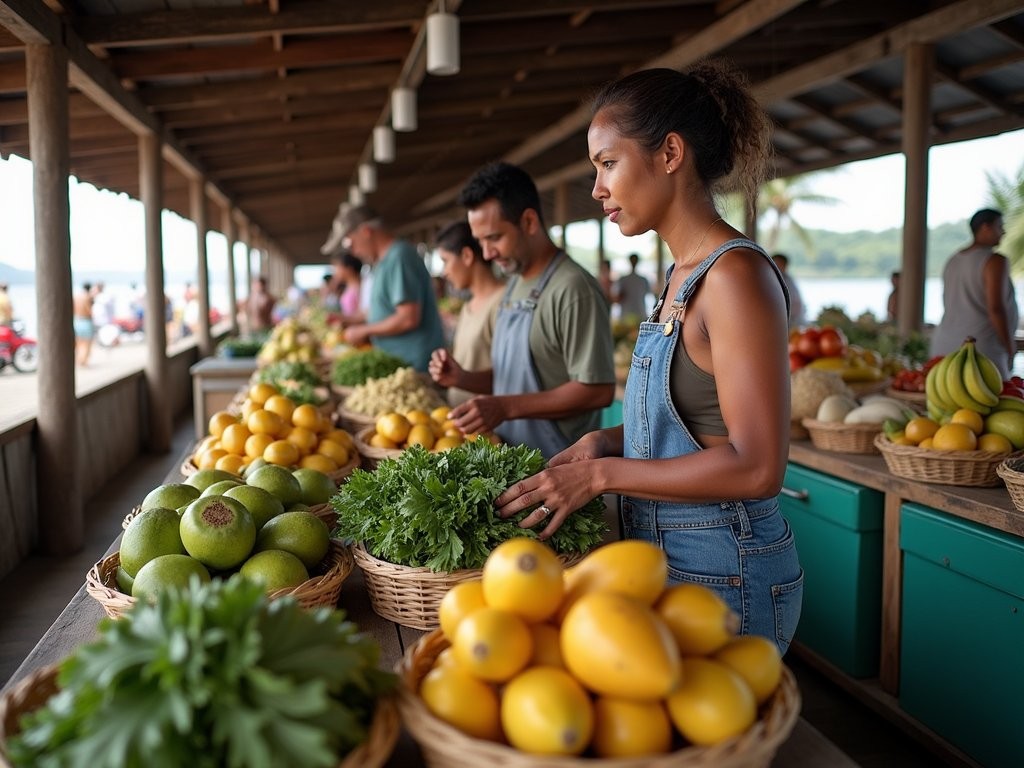
💡 Pro Tips
- Shop at the Wednesday and Saturday markets near the Spanish Wall for fresh local produce
- Participate in community cleanup events held monthly at Sokehs Rock
- Learn about traditional conservation practices through the Conservation Society of Pohnpei's free workshops
Final Thoughts
Working remotely from Palikir, Micronesia isn't for digital nomads seeking convenience or Instagram-perfect workspaces. It's for those willing to embrace adaptability, meaningful cultural exchange, and a deeper connection to place. The connectivity challenges I encountered ultimately became gifts—forcing intentional work habits, creating natural boundaries between professional and personal time, and encouraging genuine immersion in local life. What Palikir lacks in digital infrastructure, it more than compensates for in perspective—on sustainable living, on community values, and on what truly constitutes productivity. If your remote work journey has become too comfortable or predictable, consider this Pacific capital as your next destination. Just come prepared with patience, backup power solutions, and an openness to redefining what a successful workday looks like. The rewards—professionally and personally—will extend far beyond your departure date.
✨ Key Takeaways
- Palikir offers a unique digital nomad experience for those willing to adapt to connectivity limitations
- Building relationships with local businesses and organizations creates meaningful work opportunities
- Split-shift scheduling allows for both productivity and cultural immersion
- Sustainable practices are essential when working from environmentally vulnerable locations
📋 Practical Information
Best Time to Visit
November-April (dry season)
Budget Estimate
$2,500-3,500/month
Recommended Duration
1-3 months
Difficulty Level
Challenging

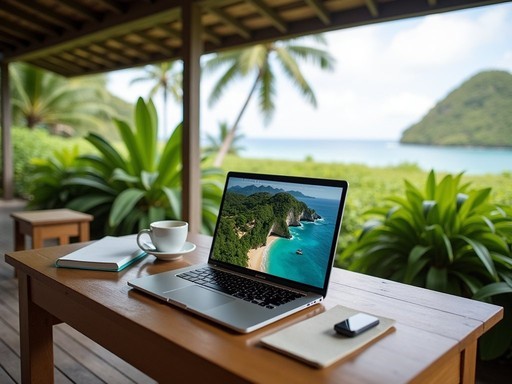

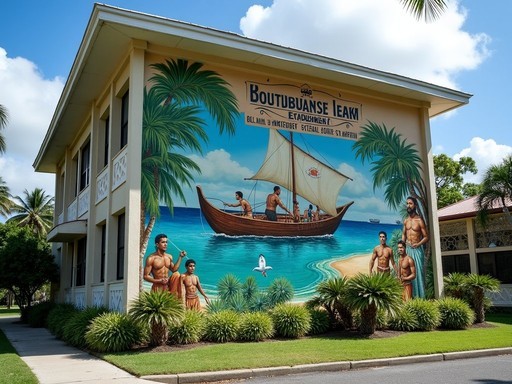
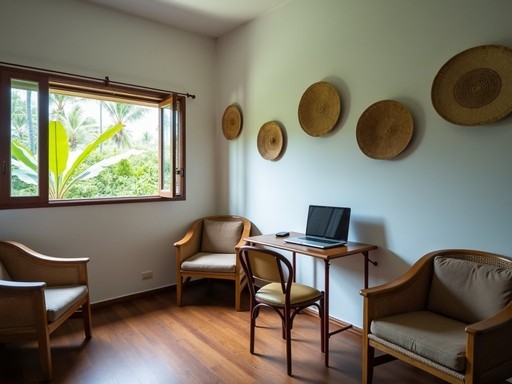



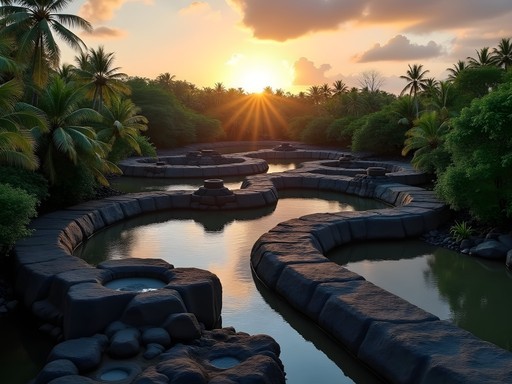
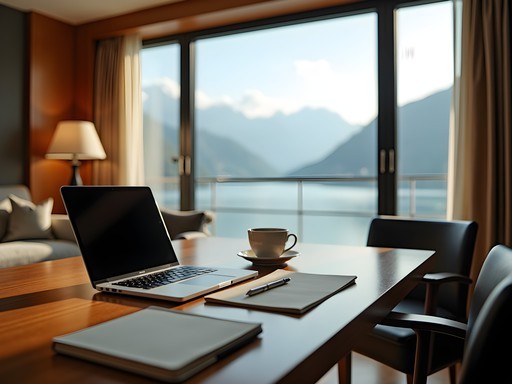

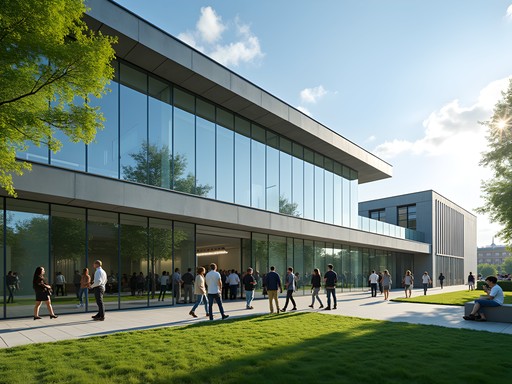




Comments
redclimber
Love this unique perspective! How was the food situation there? Any recommendations on local dishes that are must-try? Planning a Pacific island hop next year!
Savannah Torres
The food was amazing! Definitely try kon - it's a soup with plantains and taro in coconut milk. Also, their fresh fish dishes are incredible. There's this little place near the market that does the best grilled fish with local spices - just ask anyone for 'the blue restaurant' and they'll point you in the right direction!
starway
Can confirm the blue restaurant is AMAZING! Also try the breadfruit chips if you can find them - addictive snack while working.
Sarah Powell
Fascinating perspective on Palikir as a remote work location. I appreciate your candid assessment of both the challenges and rewards. The section on accommodation options was particularly useful - I've found that homestays in less-traveled destinations often provide the most authentic experience while solving the internet issue (as locals know exactly where to get the best signal!). One question: how did you handle banking/ATM access? In my experience with remote Pacific islands, this can sometimes be more challenging than internet connectivity. Did you primarily use cash or were card payments widely accepted?
Savannah Torres
Great question, Sarah! Banking was definitely tricky. There's only one main bank in Palikir with limited ATM access, so I brought a good amount of USD (which is their currency too, thankfully). Most small businesses were cash-only, though the few larger establishments and hotels did accept cards. I'd recommend bringing more cash than you think you'll need - I underestimated and had to be careful toward the end of my stay!
dreambackpacker6354
This is exactly the kind of content I'm here for! Tired of reading about Bali and Chiang Mai digital nomad scenes. Micronesia looks incredible and I love how honest you are about the challenges. Adding this to my 2026 possibilities list!
Kimberly Murphy
Savannah, you've absolutely captured the essence of working from such a unique location! I did a similar stint in Yap (not far from Palikir) last year and faced many of the same challenges. The internet unpredictability really teaches you to be flexible with work schedules! One tip for future nomads heading to Micronesia - I found my satellite hotspot to be an absolute lifesaver when the local connections were down. The cultural immersion section of your post resonated deeply - those impromptu invitations to local events were the highlight of my stay too. Did you get to experience any traditional navigation ceremonies?
wandervibes
This is so different from the usual digital nomad spots! How did you handle the timezone difference with clients/colleagues? Planning to try somewhere off-beat next year and curious about the logistics.
Savannah Torres
The time difference was challenging! I was about 14-17 hours ahead of my US clients, so I shifted my schedule to work evenings and nights (their mornings). Took about a week to adjust but then it became routine. The quiet mornings for exploration were worth it!
wandervibes
That actually sounds doable! Thanks for the insight!
starway
Wow, finally a post about Palikir! I spent 3 weeks there last year and the internet situation was exactly as you described - workable but definitely not ideal for video calls. Found this little cafe near the government buildings that had surprisingly decent WiFi. The locals were so curious about my work setup! Did you ever try working from the community college? I heard they have better connectivity but never got around to checking it out.
Savannah Torres
Thanks for reading! Yes, I actually did work from the college library for a few days - they were super welcoming and the connection was more stable than most places. That cafe sounds great though, wish I'd known about it!
Bryce Diaz
I spent 3 weeks in Palikir back in 2022 and your post brings back so many memories! The connectivity challenges are real - I ended up befriending a local government worker who let me use their office internet occasionally when I had critical deadlines. One tip for future nomads: the cultural adjustment is significant. The laid-back 'island time' mentality is wonderful but can be frustrating when you're on deadline. I found setting clear boundaries with new local friends about my work hours was essential. Also, did you discover that little cafe near the College of Micronesia-FSM? They had surprisingly decent WiFi and the owner was incredibly welcoming to remote workers who bought a few coffees throughout the day. Thanks for highlighting this truly off-the-beaten-path destination for digital nomads with a sense of adventure!
Savannah Torres
Bryce, yes! That cafe was my go-to spot! The owner even started saving me a corner table after the first week. And you're so right about setting boundaries - I had to learn that lesson quickly. The hospitality is incredible but can definitely interfere with deadlines if you're not careful!
cityace
How reliable was the internet really? Could you do video calls or was it more just email and basic browsing?
Savannah Torres
Honestly, video calls were hit or miss! I scheduled important ones during early morning hours when fewer people were online. Downloading anything large was painful, so I got in the habit of preparing everything in advance. My portable hotspot was a lifesaver when the main connection dropped.
cityace
Thanks for the honest feedback! Might need to rethink my job requirements if I want to try this.
beachblogger
Wow, never would have thought of Micronesia as a remote work spot! Super brave of you to venture somewhere so off the beaten path!
Savannah Torres
Thanks! It definitely wasn't the easiest place to work from, but that's what made it so rewarding!
adventureninja
Just got back from FSM (stayed on Pohnpei but visited Palikir) and can confirm everything in this post is spot on! One tip: make friends with someone at the college. The campus has the best internet on the island and if you're lucky, someone might share access. The cultural experience is worth every connectivity frustration though!
coolzone
Did you try the sakau? That stuff knocked me OUT lol
adventureninja
Haha yes! Definitely don't plan on working after a sakau ceremony. I was useless for hours 😂
Venture X
Premium card with 2X miles, $300 travel credit, Priority Pass